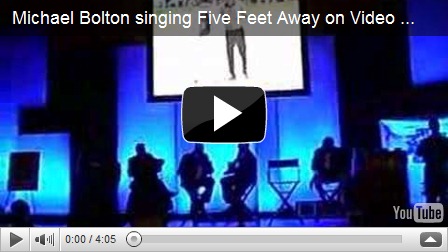There was an article by Karen Macumber, “5 people you should never hire” over on iMedia last week.
I didn’t necessarily agree with everything that Karen says, but having made my share, I am always interest in hearing about hiring mistakes.
Reading this article certainly made me happy that the only hiring I’m going to have to do from here on out are painters, electricians, and plumbers to paint, electrify, and plumb our condo. And, looking down the road a couple of decades, some nice, kind home care attendant to wipe the drool off our chins, listen to my stories about how wonderful going to bookstores used to be (and my husband’s stories about how wonderful acquiring frequent flyer miles without actually flying used to be), and make us cups of tea.
As a hiring manager, I had a checkered record. In fact, maybe it was more of a chessed record: pretty much black and white. I either hired people who were great or people who turned out to be unmitigated disasters. Actually, it might be wrong to say that they were unmitigated disasters, because I tried plenty of mitigation – clumsy, unskilled, and inevitably unsuccessful – along the way.
On Karen’s no-hire list:
The know-it-all. Her gripe is that she’s been interrupted during interviews with graduate and entry-level candidates who insist that, whatever the subject, they have been there/done that. She then goes on to say that, when it comes to real business crises, these kids are wet behind the ears, and would “freeze[s] like a deer in the headlights when confronted with a real crisis.”
Confidence is great. I want confident people working for me. But arrogance is downright dangerous. Hire someone with confidence, but make sure they are humble enough to admit there are many situations they have not been in, but wish to be in, under a true leader.
Personally, I was a bit confused by this one. Sure, I get the confidence-good, arrogance-bad thing. I once put the kibosh on a VP-Technology candidate who, during my interview with him, spent most of the time telling me how rotten our marketing was. Sayonara, a-hole.
But did she actually encounter newbies who claimed that they knew what it was like to lay-off 20 people or mortgage their home to keep the business going? How would these topics typically come up during an interview with a recent grad, unless the hiring manager was dong a bit of showing off about what a “true leader” she was.
And sometimes the “young folk” do have, within their however seemingly limited (to us) experiential range, somewhat comparable stories to tell. Case in point, if a bit off the point: Assured that the paper work was in an inter-office envelope wending its way to my office, I once called a fellow who had interned in my group to offer him a full-time position when he graduated. A day later: big hiring freeze was announced. I had to call this guy back, feeling like a complete jerk, to rescind the offer.
“That's okay,” he assured me, and went on to tell me that, as Editor-in-Chief of his college newspaper, he had just had to tell one of his best friends that he’d chosen someone else to succeed him.
Actually, his task was probably harder. I was on the phone, and I wasn’t talking to one of my best friends.
Hey, I’m no doubt appling to Karen’s orange here, but the point I’m making is that “the kids” sometimes do have somewhat analogous experiences and that, in any case, they’re probably not going to be burdened right off the bat with making life-and-death decisions.
I agree with Karen that you don’t want to hire (or be) someone who thinks they have nothing to learn, but I’m guessing I’d have a more elastic definitions of confidence and arrogance than she does.
Next on Karen’s list of no-no’s: the politician, a.k.a.., the backstabber. I’m glad she qualified this, because, in truth, there ain’t nobody going to get ahead (or even survive) in most organizations unless they have some understanding of, and ability to work, the politics. These days, politicians – understandably, that’s for sure – get an exceedingly bad rap. But in order to advance your ideas and/or yourself, you need to understand who and what matters, who’s an influencer, who’s a decider. You need to make sure that your ideas (and you) have a forum. You need to understand how to work the system, make allies, compromise as needed. No, you don’t want someone who’s all politico, all the time – at the expense of getting any real work done. I’ve worked with some of these frauds and there’s nothing worse. But you don’t want the complete ‘hide my light under a bushel basket’ types, either, who end up bitter and feeling undervalued because someone else got ahead because they had the wherewithal to get noticed.
Third up: Karen has a B-school in her bonnet, and doesn’t want to hire anyone with a Harvard MBA, unless they’re the deserving type “who enrolled in the Harvard summer program that attracts entrepreneurs from across the globe.” In which case, they probably wouldn’t be looking for a job working with you, anyway.
But Karen no-like the folks who sat behind their name tag in an amphitheater-style classroom for two-years dissecting case studies. While I know plenty of Harvard MBA’s – at least one will be reading this post – I must say that I’ve never had a position to offer which would be in the least appealing to someone with that pedigree, so I’ve never had the experience of getting to interview (and gleefully reject) one of them. No, the highest position I ever had on offer was for a senior product marketing manager which, while a decade ago could pay into the early six-figures, is not exactly the type of job that Harvardians go for. Why work for chump change when you can be a hedgie, VC, private equity guy, fancy-ass management consultant, global whatever. I have to say that I would have been completely shocked to ever see an HBS resume float my way. I did, however, report to one once. As we used to joke, MIT may know how to do stuff, but Harvard knows how to run the show.
I’m with Karen on not hiring a liar who fabricates what they’ve done, which in this age of suspicion (and the Internet) is a pretty cretinous thing to do. I did once see a resume in which someone claimed that, as a summer intern, they’d set GM’s strategy. (So that’s what happened to GM in the 1980’s?). This guy didn’t get a further look.
Curiously, I once had a woman who’d reported to me show me her resume and asked for a recommendation. What was on her resume so aggrandized the work that she’d done, I told her that I couldn’t recommend her for that sort of a job, but that I certainly could for something more akin to what she had done. Which I advised her to put on her resume in lieu of the Big Lie.
The final type in Karen’s No-Hire Zone is the candidate with A.D.D. who’s not just job-hopped but career-hopped from one completely different career to the next. Given that we’re now being told that everyone is going to have multiple careers over the course of their work life, I don’t think I’d necessarily reject the A.D.D. type. If they had skills that were transferrable from one career to the next, what the hell? Why do companies fall all over themselves to hire service academy grads? It’s not because dodging IED’s in Iraq as a second lieutenant is the same as, say, high tech marketing. It’s because they have experience under pressure, know how to make decisions, can take responsibility, make tough choices, understand delegation, and can think on their feet. Those are skills that are absolutely transferrable - as long as they “get” the fact that, in the civvie-world, you can’t just bark and order and expect someone to follow it. Remind me to blog about the chaotic software company I worked for that brought in a retired U.S. Admiral to kick-ass and make everything ship-shape. Epic fail, aweigh!
Anyway, my list of hires to avoid would be different from that of Karen Macumber.
Here’s the Big Two must-avoids for me:
Someone who really doesn’t want the job on offer. I’m fine with someone who views the position as a stepping stone. But they do have to be willing to actually perform the work they’re being hired for. Here’s how I learned that this is a big mistake:
I had a req for an assistant product manager, and had a couple of great candidates lined up. Then a dark-horse internal candidate emerged. It was clear from the interview that he didn’t give a hoot and holler about the job that I had for him. He just wanted to have access to the stock market data that the would be available to him, given our product set. He really wanted to be a day trader. I told my boss, thanks-no-thanks, but his boss then informed me that my choice was take this guy or lose the req. Foolishly, I took the guy, and he was just one big do-nothing headache. Foolishly – I really liked the guy, who was smart and funny (my one-two sucker punches) – I ended up covering for his shortfalls all over the place. My boss caught on and put my pal on a lay-off list, which made him just as happy. (And, yes, he ended up in the financial services industry.)
Somebody else’s problem child. Three times I made the mistake of hiring someone after their reference said something along the lines of “I’m happy that someone’s giving her a chance.” Now, I am all in favor of second chances. (I’m on the board of a homeless shelter, and our clientele would have no hope whatsoever of improving their lot if there were no folks who believed in second, third, and “n” chances.) Still, why in none of these cases – especially after having been burnt in Case One – I didn’t pursue things with the reference by asking, “Oh, what do you mean?” Instead, I had the hubris to assume that exposure to wonderful me would be all that someone needed to turn their life around. Ha, I say ha ha.
In two of the cases, the person turned out to have substantial mental health issues and became a complete and utter drain on me and the company. Case One left after I put her on performance plan. (It didn’t help my ego that my boss had recommended against hiring this individual because he felt that there was something a bit “off” about her. I thought he was being a sexist, and made it my personal crusade to get her to join the company.)
Case Two was fired when she was apprehended faxing a company contact list to a head-hunter. During working hours. Using a company fax machine. During the tech-boom when we were in fierce competition for every hire.
Case Three turned out to be pleasant enough, but almost stunningly incompetent. She had been an internal transfer, an admin that someone else was willing to let go when I was desperate for support for my growing team. Why every red flag in the world didn’t go up when her old boss told me, “You’ll probably be good for her.” Did I ask ‘why do you say that’? Instead I went ahead: of course I would be good for her, I was good for everybody… Conveniently, we had a lay-off while she was on performance notice, so I was able to get rid of her through that mechanism.
Is there anyone who wonders why I’m just as happy that I’m no longer a [hiring] manager?
 selves over to the Naturalizer way of life, Louboutin makes dizzying high, dazzlingly sexy shoes known for their bight red soles – so precious that you can order special clear covers to protect them. Personally, I don’t see why anyone would actually need to protect the soles of these (non-Hush) puppies, given that anyone wearing them would have to be carried around on a sedan chair from place to place in order to get around.
selves over to the Naturalizer way of life, Louboutin makes dizzying high, dazzlingly sexy shoes known for their bight red soles – so precious that you can order special clear covers to protect them. Personally, I don’t see why anyone would actually need to protect the soles of these (non-Hush) puppies, given that anyone wearing them would have to be carried around on a sedan chair from place to place in order to get around. 



![[RECOMMEND]](http://si.wsj.net/public/resources/images/MK-BO128A_RECOM_NS_20110807210003.jpg)
